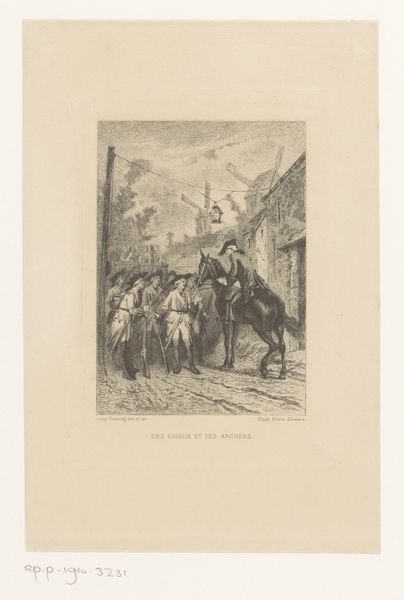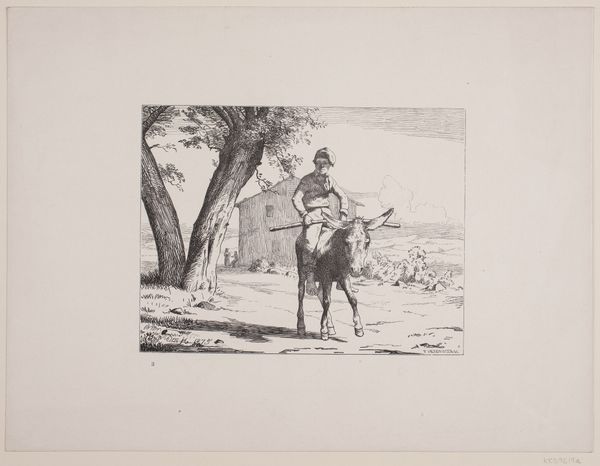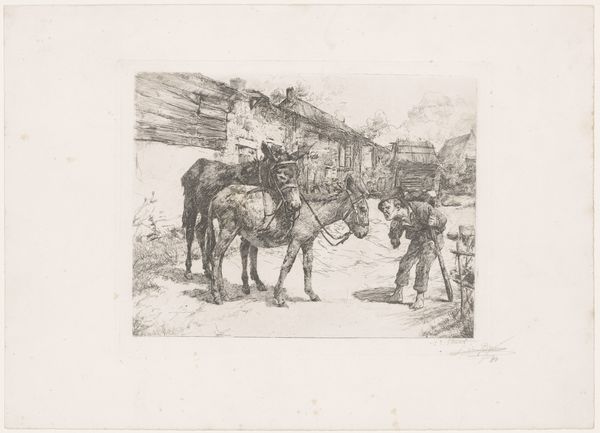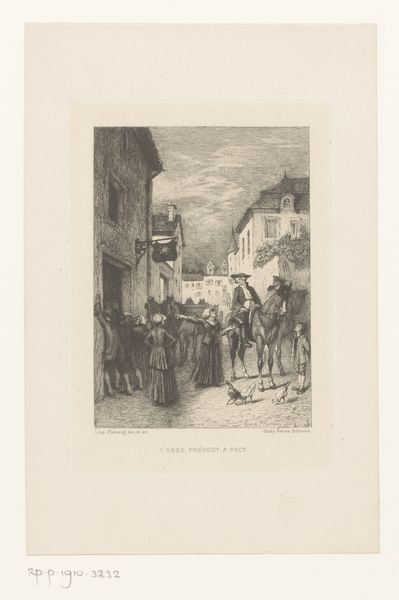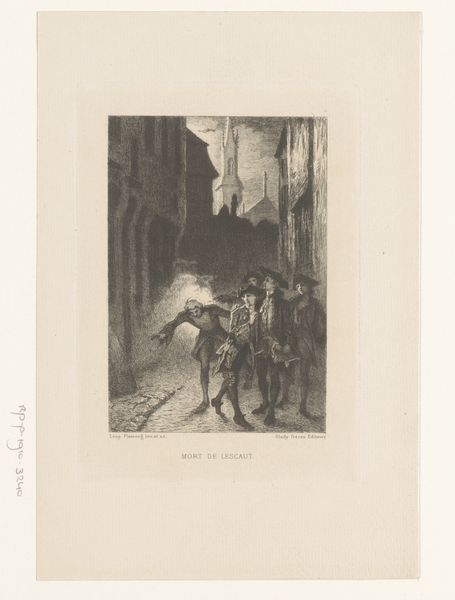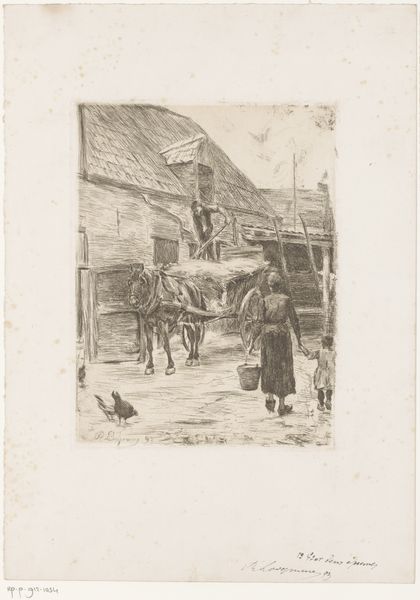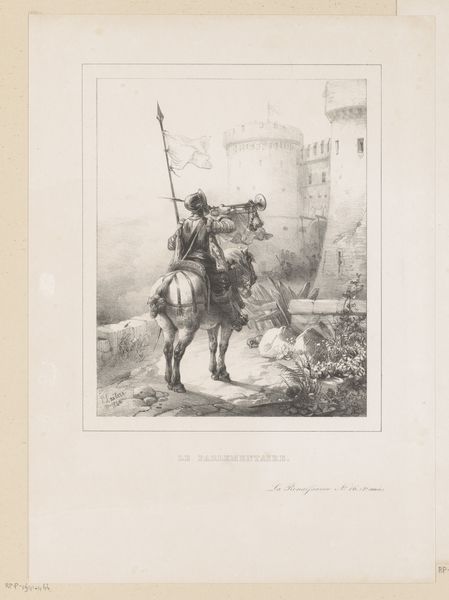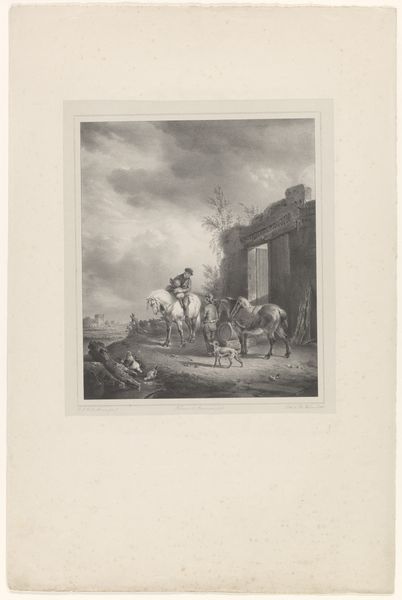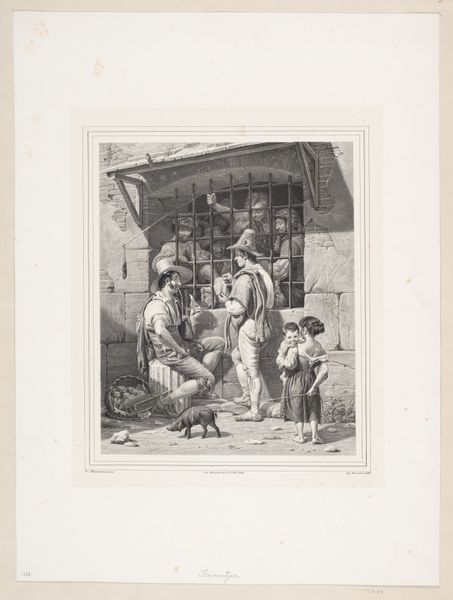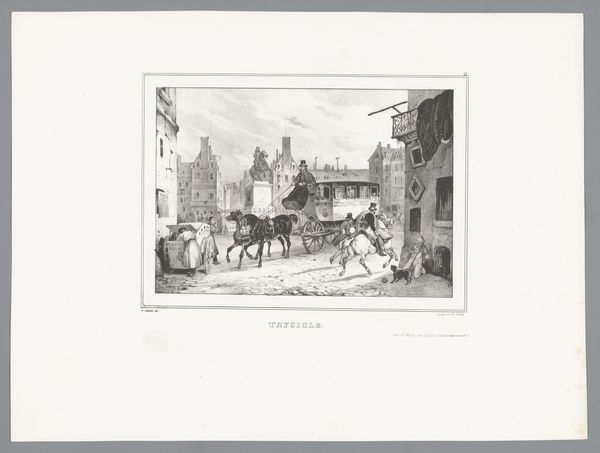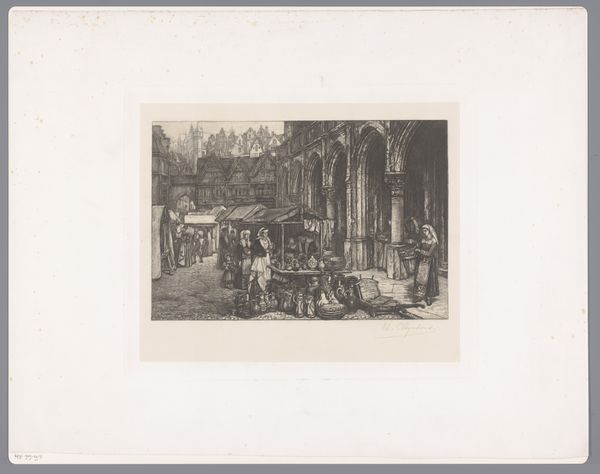
drawing, print, etching, paper, ink
#
drawing
#
narrative-art
# print
#
etching
#
landscape
#
paper
#
ink
#
genre-painting
#
realism
Dimensions: height 260 mm, width 208 mm
Copyright: Rijks Museum: Open Domain
Editor: So, here we have "Resting Rider," an etching by Hans W. Schmidt from 1885. It's quite detailed; you can even see chickens pecking around the feet of the figures in the foreground. What's your take on this work? Curator: I see a potent commentary on power dynamics. Notice the rider, elevated and armed, in contrast to the commoners outside the tavern. Consider the period - 1885. The etching speaks to deeply entrenched social hierarchies. How do you see gender and class playing out here? Editor: Well, the woman seems burdened, carrying a child, while the man looks almost…begging? And the rider has such authority. Do you think Schmidt was making a political statement? Curator: Absolutely. Look at the tilted angle and imbalance in this snapshot of power! Artists like Schmidt are often subtly critiquing the structures they inhabit. Etchings like these offered commentary available for wider distribution due to their ability to be mass-produced. How does knowing that influence your interpretation? Editor: That makes sense. Seeing it as a readily reproducible political statement changes things! The scene feels less like a slice of life and more like intentional social commentary. I also thought it was just depicting rural life. Curator: And isn't it both? That tension – that inherent conflict– makes the work so compelling. By observing the specific interactions, Schmidt invites us to question the entire system. What about you now: how do you view this artwork? Editor: I see it as a powerful snapshot of a society grappling with inequality. It pushes us to consider the unspoken rules and power imbalances embedded within seemingly ordinary scenes.
Comments
No comments
Be the first to comment and join the conversation on the ultimate creative platform.
